#leukemia types
Text
1 note
·
View note
Text
...
#hm. thinking about death and all that#bc the other day my mom texted me and my sisters to say shes added another cancer to her repertoire#shes had smooth muscle cancer for the past maybe 10 years but in the last year shes gotten a lot sicker#idk how long shes been stage 4 but shes got tumors in her liver. bladder. and maybe a kidney. and now shes also got like pre leukemia#she like deff got it from chemo treatment so now shes gotta try to go get a different treatment#but the type of mds she has is more likely to be treatment resistant and advance to acute myloid leukemia#so idk maybe itll go well. right now she still feels okay. but it just feels like the beginning of the end#so death has been on my mind the past few days#i feel mostly fine bc i think my medication is actually working. i just feel like im waiting for the other shoe to drop ya kno#and selfishly if she dies in the next 4 years itll b a real clusterfuck for my life#but i dunno her life has been super unfair and it sucks that she has to go thru all this#also when i was home last her hair looked insane bc she lost most of it but didnt shave what was left so she had new hair growing short#underneath and all i could think when i looked at her was: we r at the end of vanity. bc im a goblin#unrelated
11 notes
·
View notes
Text
I just talked with my grandma who has been at my great aunts hospital bedside for days and they got some shockingly optimistic news about possible treatments today but my great aunt was upset about being told she could very well live because she is enjoying the attention from everyone being scared about how long she has left and my grandma is trying to impart on her that possibly beating the cancer is good news which feels like the most obvious thing to have to tell someone 🙄
#honestly I’m just feeling so relieved right now#my grandma had been having some health issues before my great aunt got the leukemia diagnosis a few days ago anyway and then she rushed down#to be there for her sister and of course I’m worried about my great aunt but she is the type of person to cut her own hand off if it would#get her sympathy so to speak and my grandma had been so scared and feeling like she had to be the strong one#and just now she sounded more optimistic than she has since before all of this because my great aunt was#finally stabilized enough to be transferred to a much better hospital where she’s getting better care#and they’re talking about possible full cures and it just feels like such a relief that at least for right now they’re both okay and my#grandma is feeling positive and happy#i was feeling so stressed about all this today and it’s gotten a lot better after that call
3 notes
·
View notes
Text
Decoding the Complete Blood Count Test
Ever wondered what goes on when your doctor orders a Complete Blood Count (CBC) or CBP test? It might sound like a complex medical procedure, but let's decode it together.
The Complete Blood Profile (CBP) is like a comprehensive health check for your bloodstream. It's your doctor's way of getting a detailed look at your blood's vital components. This test doesn't just skim the surface; it delves deep, examining your red blood cells (RBCs), white blood cells (WBCs), and platelets.
Think of the CBP test as your body's storyteller. It's like your body narrating tales about its health challenges and treatments. It goes beyond a routine checkup; it's a window into your inner workings. Every detail in the test provides valuable insights for your doctor, ensuring your body is functioning optimally.
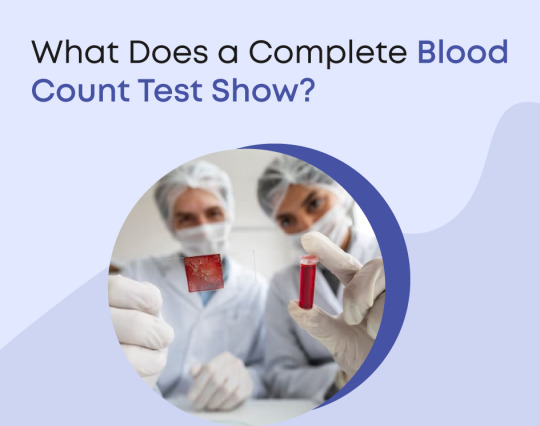
Monitoring your blood health through a Complete Blood Count (CBC) test is crucial for overall well-being. The CBP test offers a glimpse into your body's functionality, helping you understand how it operates. Ultimately, it's your guide to maintaining good health—a user-friendly manual for your well-being! To read about the specific components of CBC please visit: https://www.drkarunhematology.com/blog/what-does-a-complete-blood-count-test-show/
Or watch this youtube video: https://youtu.be/hHl78V7vmOU (Video in Telugu)
Dr KK Hematology Clinic
No 3-9-242, 81, Siva Arun Colony, West Marredpally, Secunderabad, Telangana 500026.
Facebook: https://www.facebook.com/DrKKCompleteHematologyCare
Youtube: https://www.youtube.com/channel/UC6icFvbjZt24SuRXoS-uwqw/featured
LinkedIn: https://www.linkedin.com/in/dr-k-karuna-kumar-4b20b8192/
Contact us: https://www.drkarunhematology.com/contact.html#
#aplastic anemia#immune deficiency disorders#leukemia#multiple myelomas#lymphoma#sickle cell anemia#thalassemia#malignant disorders#platelet disorders#blood clotting#blood test#blood type#blood transfusion#complete blood count
0 notes
Text
might be going into the cities with my sister sometime soon so she can donate bone marrow to someone with leukemia. she signed up for some kind of “we’ll tell you if you match w/somebody who needs any kind of donor” program a while back and they contacted her earlier today to tell her she’s got a match. I’ll probably be going with her, so that’s interesting. kind of disappointed I can’t donate stuff, but I’m anemic and I react poorly to anesthesia (had a past surgery where I woke up early and was partially paralyzed and lost sensation in my legs and it was a big mess) and I think I have something else that disqualifies me. maybe the fact that I had Lyme Disease? but yeah my sister’s wanted to be a donor for a long time so she’s pretty happy about this. she donates blood and plasma already around here, but bone marrow is a step up for sure. fortunately she’s very healthy and has a good history with reacting to anesthesia and surgery recovery and all that, so no issues anticipated.
#leukemia is very serious so i hope this helps this person out#love the fact that ppl can just donate stuff like this#like we're not getting paid but apparently they work things out w/your place of work or something#to cover your days absent and they handle travel expenses#i think this one is two days away and i'll go w/her because u obviously can't just get surgery 2 days away alone#she might need me to drive her back or just help her around u know?#but yeah really neat how ppl will just sign up for a 'donate parts of my body to a stranger' program#human nature really is 'it feels good to help ppl' at the core#like the reward is literally just 'yay i helped someone.'#my sister was even down to donate something bigger like a kidney or so on#(also something i cannot do since i am already down like half a kidney)#maybe in the future she'll get to do that. i know that finding donor matches can be really hard#and there are long wait lists and things#it probably helps that my sister has the universal donor blood type#but i know there are other factors at play that are more complicated than my limited medical understanding
0 notes
Text
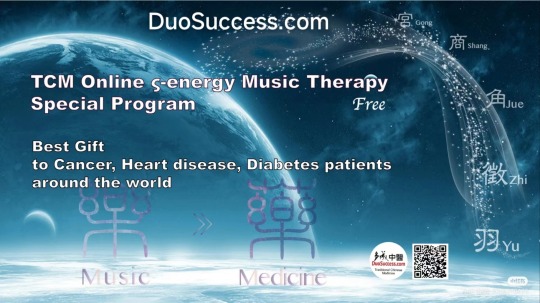
#cancer#leukemia#diabetes#type 1 diabetes#diabetic#prediabetes#breast cancer care#breast cancer surgeon in delhi#cervical cancer#breast cancer awareness#heart disease#skin cancer#fish oil#healthy diet
0 notes
Text
Understanding Lymphoma: Symptoms, Risk Factors, and Treatment Options
In this blog, we will explore the symptoms, risk factors, and treatment options for lymphoma. We will also discuss the importance of early detection and the role of support in coping with lymphoma. If you or someone you know has been diagnosed with lymphoma, or if you are simply seeking to learn more about this disease, this blog is for you.
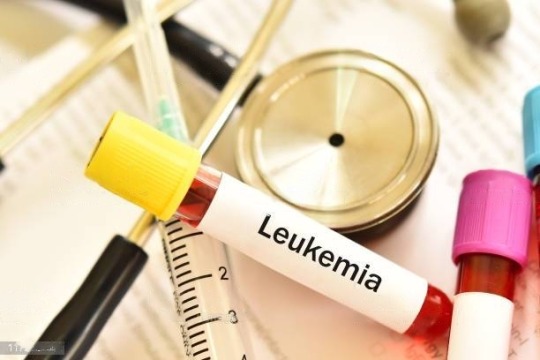
Lymphoma is a type of cancer that affects the immune system, specifically lymphocytes, which are a type of white blood cell. Lymphocytes are responsible for protecting the body from infection and disease. Lymphoma can occur in people of any age, but it is more common in people over the age of 60.
Types of lymphoma
There are two main types of lymphoma: Hodgkin lymphoma and non-Hodgkin lymphoma.
Hodgkin lymphoma is characterized by the presence of a specific type of cell called a Reed-Sternberg cell. It tends to affect people in their early 20s to mid-60s and is more common in men than women.
Non-Hodgkin lymphoma is more common than Hodgkin lymphoma and can affect people of any age. It is classified into several subtypes based on the type of lymphocyte affected and the specific features of the cancer cells.
Symptoms of lymphoma
Symptoms of lymphoma may vary depending on the type and stage of the disease, but common symptoms include:
Swollen lymph nodes: Lymph nodes are small, bean-shaped glands located throughout the body. They are part of the immune system and help to fight infection and disease. Lymphoma can cause the lymph nodes to swell, particularly in the neck, armpit, or groin.
Fever: Fever is a common symptom of lymphoma and may be accompanied by chills or sweats.
Weight loss: Lymphoma can cause unexplained weight loss, which is defined as a loss of more than 10% of body weight within the past six to 12 months.
Fatigue: Lymphoma can cause extreme tiredness or fatigue, which may not be relieved by rest.
Other possible symptoms of lymphoma include night sweats, shortness of breath, and chest pain. If you are experiencing any of these symptoms, it is wise to speak with a healthcare professional for a proper diagnosis.
Lymphoma Risk Factors
There are several risk factors that may increase a person’s risk of developing lymphoma. However, it is important to note that having one or more risk factors does not necessarily mean that a person will develop the disease.
Here are some common risk factors for lymphoma:
Age: Lymphoma is more common in people over the age of 60.
Gender: Men are slightly more likely to develop lymphoma than women.
Family history: A person with a family history of lymphoma may be at an increased risk of developing the disease.
Weakened immune system: People with weakened immune systems, such as those with HIV/AIDS or those who have had an organ transplant, may be at an increased risk of lymphoma.
Environmental exposures: Certain environmental exposures, such as exposure to certain chemicals or radiation, may increase a person’s risk of developing lymphoma.
Certain infections: People with certain infections, such as Epstein-Barr virus or Helicobacter pylori, may be at an increased risk of lymphoma.
Lymphoma treatment option
It is important for people to be aware of their risk factors for lymphoma and to discuss any concerns with a healthcare professional. Early detection and treatment can improve the chances of a successful outcome.
Treatment options for lymphoma may include chemotherapy, radiation therapy, and immunotherapy. The specific treatment plan will depend on the type and stage of lymphoma, as well as the patient’s overall health.
Chemotherapy is a type of cancer treatment that uses drugs to kill cancer cells. It may be given as a single agent or in combination with other drugs. Chemotherapy may be administered intravenously or orally and may be given in cycles, with breaks in between to allow the body to recover.
Radiation therapy is a type of cancer treatment that utilizes high-energy beams, such as X-rays, to kill cancer cells. It may be given externally, using a machine that delivers radiation to the affected area from outside the body. Alternatively, it may be given it may be injected internally, using a device that delivers the radiation from inside the body.
Immunotherapy is a type of cancer treatment that uses the body’s own immune system to fight cancer. It may be given as monotherapy or in combination with chemotherapy or other cancer treatments.
In addition to these treatment options, supportive care measures, such as pain management and nutrition support, may also be used to manage the side effects of treatment. This will improve the patient’s quality of life.
It is important to discuss all treatment options with a healthcare professional to determine the most appropriate course of treatment for an individual with lymphoma.
Conclusion
Living with lymphoma can be challenging, but with the right treatment and support, many individuals are able to manage their disease and maintain a healthy quality of life. Advances in technology and medicine are constantly being made, and there are ongoing research efforts to improve the diagnosis, treatment, and prevention of lymphoma. If you or a loved one has been diagnosed with lymphoma, it is important to work closely with a healthcare team to determine the most appropriate treatment plan. In addition, it is important addition, it is important to find ways to manage the physical and emotional challenges of the disease.
1 note
·
View note
Text
How is a bone marrow transplant done? 2023
New Post has been published on https://bankakredin.com/how-is-a-bone-marrow-transplant-done-2023/
How is a bone marrow transplant done? 2023
How is a bone marrow transplant done?
A bone marrow transplant is a procedure that implants healthy blood-making stem cells into the body to replace damaged or diseased bone marrow. In cases where the bone marrow is not functioning or cannot produce enough healthy blood cells, a bone marrow transplant is required. Bone marrow transplants are of two types, autologous and allogeneic. Transplants in which cells from the human body are used are called autologous, and transplants from a donor or donor are called allogeneic transplants. In this article, we have compiled how both types of transplantation are performed for you.
Autologous stem cell transplant
Autologous stem cell transplant uses healthy blood stem cells in the body to replace diseased or damaged bone marrow. During a stem cell transplant, using cells from one’s own body has some advantages over using stem cells from someone else. For example; In autologous stem cell transplants, there is no incompatibility problem between the transplanted cells and the body’s own cells.
Autologous bone marrow transplant may be an option only if the body is producing enough healthy bone marrow cells. These cells can be harvested, frozen and stored for later use. Autologous stem cell transplants are often used in people who need high doses of chemotherapy and radiation. Autologous stem cell transplant helps replace damaged bone marrow.
Autologous stem cell transplants are mostly used to treat the following conditions:
hodgkin lymphoma
myeloma
non-Hodgkin lymphoma
plasma cell disorders
Allogeneic stem cell transplant
Allogeneic stem cell transplant uses healthy “blood stem cells” from a donor to replace diseased or damaged bone marrow. Allogeneic stem cell transplant is also called allogeneic bone marrow transplant.
Donor; It could be a family member, acquaintance or stranger. Cells used in allogeneic stem cell transplantation can be collected from different sites such as:
from the donor’s blood
from the bone marrow in the donor’s hip bone
from donated umbilical cord blood
Before an allogeneic stem cell transplant is performed, high doses of chemotherapy or radiation therapy are taken to destroy diseased cells and prepare the body for donor cells. An allogeneic stem cell transplant may be an option for people with a variety of diseases, including:
acute leukemia
adrenoleukodystrophy
extreme anemia
bone marrow failure syndromes
chronic leukemia
hemoglobinopatiler
hodgkin lymphoma
immune deficiencies
inborn errors of metabolism
multiple myeloma
myelodysplastic syndromes
neuroblastoma
non-Hodgkin lymphoma
plasma cell disorders
POEMS syndrome
primary amyloidosis
How is a bone marrow transplant done?
PRETRANSPLANT TESTS AND PROCEDURES
Before undergoing a bone marrow transplant, a series of tests and procedures are performed to assess the patient’s general health and ensure that he or she is physically ready for the transplant. Evaluation may take several days or longer. Otherwise, a surgeon or radiologist inserts a long, thin tube (intravenous catheter) into a large vein in the chest or neck. The catheter usually remains in place for the duration of the treatment. The transplant team will use this catheter to deliver the transplanted stem cells, drugs, and blood products to the body.
STEM CELL COLLECTION FOR AUTOLOGOUS TRANSPLANT
If a transplant using one’s own cells (autologous transplant) is planned, a procedure called apheresis is used to collect blood stem cells. Before apheresis, daily injections of growth factor are administered to increase stem cell production and to transport stem cells into the circulating blood so that they can be harvested.
During apheresis, blood is taken from a vein and circulated in a special machine. The machine separates the blood into different parts, including stem cells. Stem cells are collected and frozen for use during transplantation. The remaining blood is returned to the body.
COLLECTION OF STEM CELLS FOR ALLOGENEIC TRANSPLANT
In a transplant using stem cells from a donor (allogeneic transplant), a suitable donor is searched and, when found, procedures for stem cell harvesting are performed. Stem cells can come from the donor’s blood or bone marrow. The transplant team decides which is better according to the patient’s condition.
Another type of allogeneic transplant uses stem cells from umbilical cords (cord blood transplant). Mothers can choose to donate their umbilical cord after the birth of their baby. The blood from these cords is frozen and stored in a cord blood bank until a bone marrow transplant is needed.
THE PREPARATION OR CONDITIONING PROCESS
After the pre-transplant tests and procedures are complete, a process known as the conditioning regimen begins. During conditioning, chemotherapy or radiation is administered to provide the following conditions:
destroying cancer cells
suppress the immune system
Preparing the bone marrow for new stem cells
The conditioning regimen to be taken; It depends on a number of factors, such as disease, general health, and the type of transplant planned.
What happens during a bone marrow transplant?
It happens after a bone marrow transplant completes the conditioning process. On the day of transplantation, stem cells are given to the body through the catheter. The transplant is painless and the patient is not asleep during the procedure.
After bone marrow transplant
When new stem cells enter the body, they travel from the blood to the bone marrow. Over time, they multiply and begin to make new, healthy blood cells. While it usually takes a few weeks for the number of blood cells in the body to return to normal, it may take longer for some people.
It is important to closely monitor the patient’s condition in the days and weeks after a bone marrow transplant. For this, a number of blood and similar tests can be applied to the patient. Complications such as nausea and diarrhea may be observed and medication may be required to cure them.
After a bone marrow transplant, close medical care is required. If infection or other complications occur, it may be necessary to stay in the hospital for several days or sometimes longer.
The patient may need periodic transfusions of red blood cells and platelets until the bone marrow begins to produce enough of the healthy cells on its own.
Even months or years after transplant, patients may be at higher risk for infection or other complications. Periodic lifelong follow-up appointments should be made to monitor for late complications.
Things to consider after transplant
If the bone marrow transplant uses stem cells from a donor (allogeneic transplant), doctors may prescribe drugs that reduce the immune system’s reaction (immunosuppressive drugs) to prevent Graft-versus-Host Disease (GVHD). It takes time for the immune system to recover after a transplant. During this time, medications may also be given to prevent infections.
After a bone marrow transplant, dietary adjustments may be necessary to stay healthy and prevent excessive weight gain. The nutritionist (dietician) and other members of the transplant team work with the patient to create a healthy eating plan that meets their needs and complements their lifestyle. Some of the recommendations may include:
Following food safety instructions to prevent foodborne infections
Eating a wide variety of healthy foods, including vegetables; fruits; whole grains; lean meat, poultry and fish; legumes; and healthy fats such as olive oil
Limiting salt intake
Limiting alcohol
Avoiding grapefruit and grapefruit juice because of their effects on a group of immunosuppressive drugs (calcineurin inhibitors)
Regular physical activity after bone marrow transplant; It helps control weight, strengthen bones, increase endurance, strengthen muscles and keep the heart healthy.
It is even more important to take steps to prevent cancer after a transplant. It is necessary not to smoke, to use sunscreen when outside and to have cancer screenings recommended by the doctor.
Bone marrow transplant results
A bone marrow transplant can cure some diseases and put others in remission. Some people complete a bone marrow transplant with few side effects and complications. Others face a multitude of challenging problems both in the short and long term. The severity of side effects and the success of the transplant vary from person to person and can sometimes be difficult to predict before transplant.
It can be discouraging when significant difficulties arise in the transplant process. However, it may be helpful to remember that sometimes there are many people who go through very difficult times during the transplant process but ultimately have successful transplants and return to normal activities with a good quality of life.
We wish you healthy days.
Hospitals where the treatment is applied
Medical Park Antalya Hospital Complex
ISU Medical Park Gaziosmanpasa Hospital
Medical Park Bahcelievler Hospital
marrow transplant,are bone marrow transplants painful,how are bone marrow transplants done,how successful are bone marrow transplants,are bone marrow transplants dangerous,what are bone marrow transplants for,what are bone marrow transplants used for,what are the side effects of bone marrow transplant,what are the types of bone marrow transplants,what are the requirements for bone marrow transplant,what are the criteria for bone marrow transplant,can bone marrow transplant cure leukemia,can bone marrow transplant change genotype,can bone marrow transplant change dna,can you die from a bone marrow transplant,can bone marrow transplant cure hiv,can bone marrow transplant cure sickle cell,who can donate bone marrow transplant,who can give a bone marrow transplant,can bone marrow be transplanted,
#are bone marrow transplants dangerous#are bone marrow transplants painful#can bone marrow be transplanted#can bone marrow transplant change dna#can bone marrow transplant change genotype#can bone marrow transplant cure hiv#can bone marrow transplant cure leukemia#can bone marrow transplant cure sickle cell#can you die from a bone marrow transplant#how are bone marrow transplants done#how successful are bone marrow transplants#marrow transplant#what are bone marrow transplants for#what are bone marrow transplants used for#what are the criteria for bone marrow transplant#what are the requirements for bone marrow transplant#what are the side effects of bone marrow transplant#what are the types of bone marrow transplants#who can donate bone marrow transplant#who can give a bone marrow transplant
0 notes
Text
Acute Lymphocytic/Lymphoblastic Leukemia (ALL) Therapeutics Market size, Scope, Growth Opportunities, Trends by Manufacturers and Forecast to 2028
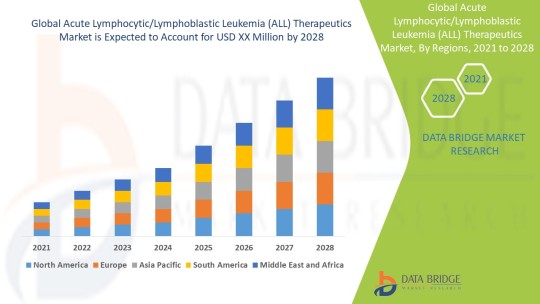
Industry Analysis
The acute lymphocytic/lymphoblastic leukemia (ALL) therapeutics market is expected to gain market growth in the forecast period of 2021 to 2028. Data Bridge Market Research analyses the market to grow at a CAGR of 5.25% in the above-mentioned forecast period. Rise in the prevalence of acute lymphocytic/lymphoblastic leukemia (ALL) drives the acute lymphocytic/lymphoblastic leukemia (ALL) therapeutics market.
Additionally, the credible Acute Lymphocytic/Lymphoblastic Leukemia (ALL) Therapeutics Market report helps the manufacturer in finding out the effectiveness of the existing channels of distribution, advertising programs, or media, selling methods and the best way of distributing the goods to the eventual consumers. Taking up such market research report is all the time beneficial for any company whether it is a small scale or large scale, for marketing of products or services. It makes effortless for healthcare industry to visualize what is already available in the market, what market anticipates, the competitive environment, and what should be done to surpass the competitor.
Get a Free Sample of The Report: https://www.databridgemarketresearch.com/request-a-sample/?dbmr=global-acute-lymphocytic-lymphoblastic-leukemia-all-therapeutics-market
Market Insights and Scope
Acute lymphocytic/lymphoblastic leukemia (ALL) therapeutics are the defined as the type of collection of drugs and therapeutic systems available in the market for its treatment. In this cancer, the blood and bone marrow are affected with cancerous cells which result in compromise of integrity of white blood cells. It is most common in pediatric patients as it occurs when the bone marrow cell consists of errors in its DNA, this generally occurs while the bone marrow is under development.
An international Acute Lymphocytic/Lymphoblastic Leukemia (ALL) Therapeutics Market research report examines competitive companies and manufacturers in the global market. Competitive analysis carried out in this market report puts forth the moves of the key players in the healthcare industry such as new product launches, expansions, agreements, joint ventures, partnerships, and recent acquisitions. This market report puts light on various aspects of marketing research that range from important industry trends, market size, market share estimates, sales volume, emerging trends, product consumption, customer preferences, historic data along with future forecast and key player analysis. It studies market by product type, applications and growth factors.
Get full access to the report: https://www.databridgemarketresearch.com/reports/global-acute-lymphocytic-lymphoblastic-leukemia-all-therapeutics-market
Industry Segmentation
The acute lymphocytic/lymphoblastic leukemia (ALL) therapeutics market is segmented on the basis of age group, diagnosis, drug type, therapy, cell type and route of administration. The growth amongst these segments will help you analyse meagre growth segments in the industries, and provide the users with valuable market overview and market insights to help them in making strategic decisions for identification of core market applications.
On the basis of age group, the acute lymphocytic/lymphoblastic leukemia (ALL) therapeutics market is segmented into pediatrics and adults.
Based on diagnosis, the acute lymphocytic/lymphoblastic leukemia (ALL) therapeutics market is segmented into biopsy & bone marrow aspiration, complete blood count (CBC) & differential, presence of philadelphia chromosome, spinal tap & cerebrospinal fluid (CSF) analysis, immunophenotyping/phenotyping by flow cytometry and polymerase chain reaction (PCR).
Based on drug type, the acute lymphocytic/lymphoblastic leukemia (ALL) therapeutics market is segmented into existing drugs and pipeline drugs.
Based on therapy, the acute lymphocytic/lymphoblastic leukemia (ALL) therapeutics market is segmented into targeted drugs & immunotherapy, chemotherapy, radiation therapy, stem cell transplantation and pipeline.
Based on cell type, the acute lymphocytic/lymphoblastic leukemia (ALL) therapeutics market is segmented into philadelphia chromosome, precursor B-cell ALL and T-cell all.
The acute lymphocytic/lymphoblastic leukemia (ALL) therapeutics market is also segmented on the basis of role of administration into oral and parenteral.
Market Country Level Analysis
The countries covered in the acute lymphocytic/lymphoblastic leukemia (ALL) therapeutics market report is
U.S., Canada and Mexico in North America, Germany, France, U.K., Netherlands, Switzerland, Belgium, Russia, Italy, Spain, Turkey, Rest of Europe in Europe, China, Japan, India, South Korea, Singapore, Malaysia, Australia, Thailand, Indonesia, Philippines, Rest of Asia-Pacific (APAC) in the Asia-Pacific (APAC), Saudi Arabia, U.A.E, South Africa, Egypt, Israel, Rest of Middle East and Africa (MEA) as a part of Middle East and Africa (MEA), Brazil, Argentina and Rest of South America as part of South America.
An influential Acute Lymphocytic/Lymphoblastic Leukemia (ALL) Therapeutics Market research report displays an absolute outline of the market that considers various aspects such as product definition, customary vendor landscape, and market segmentation. Currently, businesses are relying on the diverse segments covered in the market research report to a great extent which gives them better insights to drive the business on the right track. The competitive analysis brings into light a clear insight about the market share analysis and actions of the key industry players. With this info, businesses can successfully make decisions about business strategies to accomplish maximum return on investment (ROI).
Industry Share Analysis
The major players covered in the acute lymphocytic/lymphoblastic leukemia (ALL) therapeutics market report is
Amgen Inc.; Bristol-Myers Squibb Company; Erytech Pharma; Novartis AG; Pfizer Inc.; Rare Disease Therapeutics, Inc.; Sanofi; Spectrum Pharmaceuticals, Inc.; Takeda Pharmaceutical Company Limited; Genmab A/S; Baxter; Gilead Sciences, Inc.; CELGENE CORPORATION; Eisai Co., Ltd.; SymBio Pharmaceuticals Limited; Kiadis Pharma; OBI Pharma; Astellas Pharma Inc. and Medexus Pharma, Inc. among other domestic and global players. Market share data is available for Global, North America, Europe, Asia-Pacific (APAC), Middle East and Africa (MEA) and South America separately.
Browse Related Reports@
Global Frozen Vegetables Market
South Africa Battery Market
Global Plant-Based Egg Market
Global Nutritional Beverages market
Spain Fuel Cards Market for Commercial Fleet
Europe Fall Detection System Market
About Us:Data Bridge Market Research set forth itself as an unconventional and neoteric Market research and consulting firm with an unparalleled level of resilience and integrated approaches. We are determined to unearth the best market opportunities and foster efficient information for your business to thrive in the market
Contact:
Data Bridge Market Research
Tel: +1-888-387-2818
Email: [email protected]
#Acute Lymphocytic/Lymphoblastic Leukemia (ALL) Therapeutics Market Growing Popularity#Acute Lymphocytic/Lymphoblastic Leukemia (ALL) Therapeutics Market Global Leading Brands#Acute Lymphocytic/Lymphoblastic Leukemia (ALL) Therapeutics Market drivers-advantages#Acute Lymphocytic/Lymphoblastic Leukemia (ALL) Therapeutics Market Segmentation-CAGR rate#Acute Lymphocytic/Lymphoblastic Leukemia (ALL) Therapeutics Market Demands-Size-Share-Top Trends#Acute Lymphocytic/Lymphoblastic Leukemia (ALL) Therapeutics Market Industry-Competitors#Acute Lymphocytic/Lymphoblastic Leukemia (ALL) Therapeutics Market Growth-Competition#Acute Lymphocytic/Lymphoblastic Leukemia (ALL) Therapeutics Market 2028 by Types-Application#Acute Lymphocytic/Lymphoblastic Leukemia (ALL) Therapeutics Market healthcare Industry
0 notes
Photo
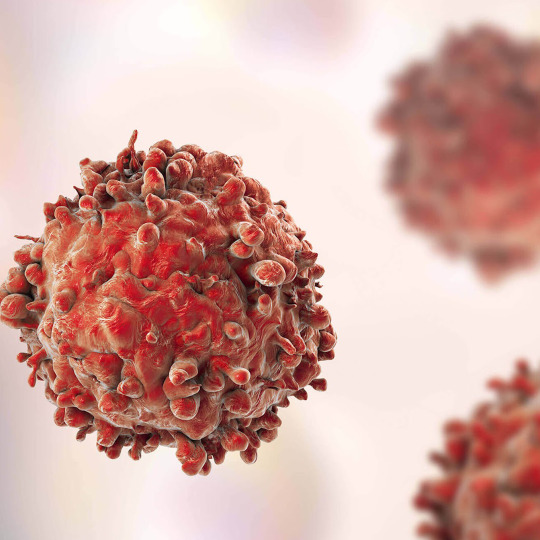
Nursing Review: The 4 Types of Leukemia
Nurses Should Know
Leukemia is a type of cancer that affects your blood and bone marrow. It happens when your body makes too many abnormal white blood cells quickly. These abnormal white blood cells can't fight off infections, and they also make it harder for the bone marrow to make red blood cells and platelets. Leukemia can be short-term or long-term. Acute leukemia, which needs treatment right away, moves along more quickly than chronic leukemia. Leukemia is also called lymphocytic or myelogenous leukemia.
0 notes
Note
I noticed characters who mod their bodies are called -mancers of different sorts. Can you tell me more about your wonderful idea of genetic/cybernetic modification as a form of magic? I haven't gotten super far in Amber Skies but I'm intrigued by this idea and I wanna hear an infodump on this magic system pls
Oh no, synthetimancy is actually a disease. Its technically a form of cancer. The idea being that you infect part of your body with it, and you lose unconscious control of that body part, but gain conscious control of that body part.
When student moves her infested hand, she isn't doing it through muscle memory. She is consciously puppetting every single muscle fiber, consciously pumping blood into the hand, and consciously forcing cellular apoptosis.
Because she has conscious control over that portion of her infested cell structure, she can do things like consciously rearrange the sweat glands on her palm to produce milk, or kerosene, or lithium biphosphate.
If you wanted to become a synthetimancer, you just need someone with the disease to intentionally share it with you. But if you aren't trained for it, you rapidly just get leukemia and die. For most people, the risks outweigh the rewards, but Students culture has a long history of synthetimancy. Their hyperactive endocrine systems mean they are effectively impossible to poison, but their skin occasionally fits off in patches. Synthetimancy is extremely good for producing sterile skin grafts, so their culture has a long hisory with the art.
There are actually multiple different terms for different types of bodily modifications. Student is just a synthetimancer. If you were genetically modified, you're referred to as "tailored" if you were mechanically or synthetically modified, you're referred to as "augmented."
440 notes
·
View notes
Text
Leukemia Its Symptoms, Causes, Diagnosis, And Treatment
Leukemia Its Symptoms, Causes, Diagnosis, And Treatment
If you or anyone you know suffers from Leukemia, here you can learn about its symptoms, causes, diagnosis, and treatment in brief
#Leukemia #blooddisease #bonemarrow #cancer #bloodcancer #leukemiatypes #causes #symptoms #treatment #AcuteLymphocyticLeukemia #AcuteMyeloidLeukemia #chemotherapy #bonemarrowtransplant
Leukemia is a blood disease in which the bone marrow produces abnormal white blood cells (leukemic blast cells or leukemia cells). These cells divide, reproducing themselves, which causes a proliferation of altered cells that do not die when they age. Hence, they accumulate and displace normal cells. In this way, healthy cells are reduced, with the consequent problems of oxygen transport to the…

View On WordPress
#Causes Of Leukemia#Diagnosis Of Leukemia#Leukemia Treatments#Leukemia?#Symptoms Of Leukemia#Types Of Leukemia#What Is Leukemia
0 notes
Text


˚ ༘ ೀ⋆ ִֶָ⁽ ⠀ basics ⠀ ⁾
STAGE NAME ﹕nakyung
BIRTH NAME ﹕nicole lee
KOREAN NAME ﹕lee nakyung
BIRTHDAY ﹕april 1, 2002
ZODIAC ﹕aries
BIRTHPLACE ﹕toronto, canada
ETHNICITY ﹕korean
NATIONALITY ﹕canadian
˚ ༘ ೀ⋆ ִֶָ⁽ ⠀ physical ⠀ ⁾
FACECLAIM ﹕kim haram of billlie
HEIGHT ﹕165cm (5’5”)
BLOOD TYPE ﹕a
˚ ༘ ೀ⋆ ִֶָ⁽ ⠀ career ⠀ ⁾
OCCUPATION ﹕idol soloist
COMPANY ﹕bbc entertainment (2015–2023) delphi entertainment (2023–)
GROUP ﹕loona (2016–2023)
UNIT ﹕yyxy (unofficial) (2016–2023)
FANDOM ﹕orbit (2018–2023) tba (2023–)
EMOJI ﹕🐦⬛
COLOR ﹕light blue #cde0fc
˚ ༘ ೀ⋆ ִֶָ⁽ ⠀ history ⠀ ⁾
cw brief mention of cancer
Nicole Lee was born on April 1, 2002 in Toronto, Canada to Angie Lee, a music teacher, and Joshua Lee, a baker. She is the middle child of an older brother, Daniel, and a younger sister, Lily. When she was twelve-years-old, her mother was diagnosed with leukemia. Her mother was laid off and her father’s job could not provide for a family of five and medical bills. With the encouragement from their family, the family moved to South Korea to have extra in person support.
As a loner with only a few friends in school, she didn’t have very much of a social life and mostly worked under the table jobs as a waitress to help pay for her mother’s medical bills. Her only solace from reality was music. Nicole, now going by Nakyung, was street casted by Blockberry Creative when she was 14. Despite her parents thinking it was sketchy and a cult was trying to recruit her, she went to the audition with her older brother, Daniel, when she was supposed to be at school and was accepted.
On April 14, 2018, Nakyung released her solo single album titled “Nakyung” with the title track “Sugarcoat.”
In 2023, after the dismissal of member Chuu, Nakyung terminated her contract with Blockberry Creative. She then signed a contract with Delphi Entertainment and debuted as a soloist on November 17, 2023 with “Really Like U!”
#˚ ༘ ೀ⋆。˚ ⠀⠀nakyung ⠀⠀ ☽ ⠀⠀profile.#fictional idol community#ficnetfairy#13th member of loona#loona 13th member#loona unit#kpop addition#kpop female addition#bts female addition#bts 8th member#kpop female member#kpop imagines#idolverse#kpop oc#idol oc#kpop idol oc#fake kpop idol#fake kpop soloist#loona#loona yyxy#stray kids 9th member#ateez 9th member#txt 6th addition#kpop added member#kpop scenarios#fake kpop oc#fake kpop addition#fictional idol addition#bts addition#bts female member
61 notes
·
View notes
Text
My roommate Sam has leukemia.
Her husband rushed her to the hospital on November 19th with severe pain and difficulty breathing. Her blood sugar was 44 (way too low) and her white blood cell count was 166,000 (way too high). Wellstar then dicked around for two days and watched her numbers fuck up, doing zero additional tests ("well you know it's a holiday weekend so it's hard to get people up here") until they finally actually transferred her to Northside Hospital's oncology center. This is where her (assumed) diagnosis changed from lymphoma to leukemia.
In no uncertain terms, Wellstar almost killed Sam. The ICU staff at Northside confirmed that if they had waited another day she would have died. "Another day and we wouldn't be discussing treatment, we'd be discussing either hospice or funeral."
Everything else is in the gofundme below, but to paraphrase: she had white blood cell buildup around her heart and lungs. Her spleen was also so swollen it was pressing on her heart, lungs, and stomach. Her kidneys started shutting down from trying to filter so many immature white blood cells out of her system. She's been on dialysis, leukapheresis, steroids, and insulin (to combat the rise in blood sugar from the steroids). She's gotten five transfusions of platelets and one regular blood transfusion. We're waiting on biopsy results for the exact form but right now it looks like acute lymphocytic leukemia (ALL). She's responding well to the treatments she's received so far, but it's still a long road ahead.
It's still very early days so stuff like disability and leave are still being worked out. We're going to have to start paying her insurance out of pocket, not just for her but because their type 1 daughter is also on it.
I keep calling these things "hurdles" but this might actually be a fucking wall. Scalable, for sure, but so much higher than we're used to having to climb. I was originally going to make an update on the house stuff about my partner's raise and the deal we made with the county and how it was going to make the house stuff easier, but instead I am making this post. Believe me, I do not want to be making this post. For several reasons.
The gofundme is here: Thank you and we love you.
111 notes
·
View notes
Text
10 years ago, Batkid was battling bad guys and cancer — now he's 15 and healthy

Today, Miles Scott is a healthy teenager with a passion for baseball. He plays catcher for his high school in Tulelake, Calif.
"I wear all-black in baseball," Miles said. "So the dugout's always screaming 'Batkid! Batkid!'"
Ten years ago, the then-5-year-old Miles won hearts both in his hometown and around the world when he transformed into the black-clad superhero Batkid for a day, becoming an instant media sensation.
The Make-A-Wish Foundation, a non-profit that grants wishes to children who are seriously ill, partnered with the City of San Francisco to organize the adventure for Miles, who had been battling acute lymphoblastic leukemia since he was just 18 months old.
According to the Yale School of Medicine, the disease is the most common type of childhood cancer. Survival rates used to be low, but these days children with the disease have up to a 90% chance of going on to lead a healthy life.
Granting the wish
Make-A-Wish went to elaborate lengths to make Miles' dream of becoming Batman's sidekick Batkid true. The foundation enlisted the help of The Mayor of San Francisco (the late Ed Lee), the San Francisco Police and Fire Departments, the San Francisco Giants and many other individuals and entities.
San Francisco was re-dubbed "Gotham City" — Batman's fictional home — for the day. Clad in his Batkid costume and accompanied by a grownup Batman (played by Eric Johnston), the pair zipped around in their Batmobile thwarting villains — they prevented The Riddler from robbing a bank vault — and undertaking daring rescues, including freeing the San Francisco Giants' mascot Lou Seal from The Penguin's clutches.
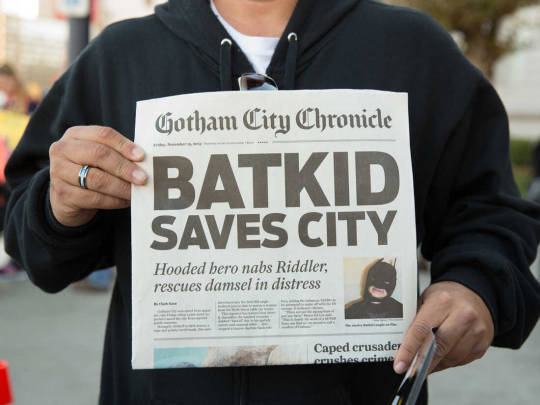
Thousands of people descended on San Francisco to cheer Miles on. He earned a key to the city. The San Francisco Chronicle published a special edition of its daily newspaper to mark the occasion. Then-U.S. President Barack Obama sent Miles words of encouragement via a video message on social media.
"The feeling was palpable; you could just feel the positiveness and how the community came together," said Miles' mom, Natalie Scott. "People flew in from everywhere and it just gave everyone some sense of peace almost."
The event was covered by many mainstream media organizations, including NPR. And millions of people around the world followed the #Batkid hashtag on social media.
Batkid lives on
Batkid's legacy didn't end on that day.
The wish was the subject of the 2015 Warner Bros. documentary, Batkid Begins. Media organizations have revisited the story over the years. "He plays Little League, attends fifth grade, helps on his family's farm and sold his first market goat at the fair over the summer," reported his hometown California paper, The Siskyou Daily News, on Batkid's fifth anniversary in 2018.
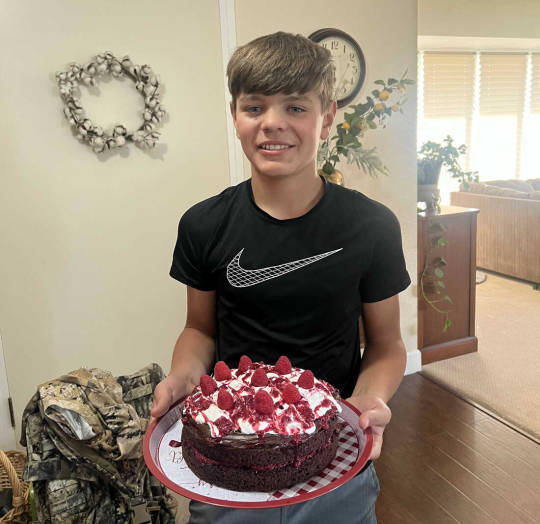
And Miles himself has been free of cancer for the past few years.
"Every year he goes for a checkup, and everything's been on the straight and narrow, so, we hope to keep it that way," said Nick Scott, Miles' dad.
Miles has grown out of his Batkid costume. But his kid brother Ben donned it last Halloween.
Miles is now in high school and is looking ahead to the future.
"Right now, he's dead set on going to Alaska and being a 'pack mule' for his cousin's husband's guide business," said Natalie Scott. "And he has a lot of interest in welding. So we'll see!"
93 notes
·
View notes
Text
'Fairness." One Piece x Saitama reader. 0
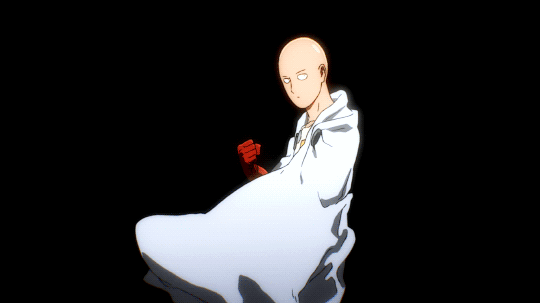
"Just a Normal girl looking for an everyday life. At least, if you call sailing across the seas with idiots with useless dreams a simple task, then you might wanna see a doctor. Seriously."
Warnings: Blood, gore, mentions of Luekimia, and heaps amount of blood and strength. It might be a little cursing, but not bad, and maybe some flirting in there, but it's mostly clean.
Other things:
-You didn't get bald due to your powers; you got bald to an extreme illness.
-You part of the straw hat crew, but others are interested in you and your power.
-Everyone that is a male is taller than you.
-Monsters from the OPM world will appear in One Piece, and I'll make some new monsters you will fight.
-I hope you enjoy my book and enjoy the prologue. :)
~~~~~~~~~~~~~~~~~~~~~~~~~~~~~~~~~~~~~~~~~~~~~
The world is crazy....and boring.
Every human on this earth has advanced opportunities to grow, become successful, and be someone or something better.
Humans can go to college, date, be an actor, actresses, heck, even garbage men.
Some people, in many most eyes, are viewed as heroes, police officers, firefighters, heck, even people who are just doing a small amount of good.
When we look at the earth thoroughly and see the truth about life, anything and anyone has to start simple before they can become something more significant.
Heck, when life proceeds, and as human lives grow, excitement rolls up, the feeling of achieving something or living off of adventure.
That's what I wanted as a kid, to become firm, to have a life full of excitement, adrenaline, heck, even adventure.
But that all blew over one day when I discovered I had leukemia.
My family was devastated, as my excitement and dreams were gone in one instant.
You see, I grew up in a world where people can have incredible powers, who all fight all kinds of monsters, creatures, and even aliens that invade our earth. I was so inspired by them during my Kemo treatment that I acted like I was one of them, living in excitement and adventure; I wanted to grow and become something better.
But, at that time, I was getting worse; my hair was all gone, my bones were brittle, and the doc said I had little time to live.
Until one day, a man visited me...a tall, bald man, his suit a bright yellow color, his cap blowing like a guardian angel.
He protected me and my room from a monster, a monster giant his size.
His eyes were filled with boredom, anger as his eyes met mine, noticing I was just like him. He also noticed the stupid wires connected to me, especially a breathing tube, which caused his heart to grow weak.
The way the man looked back at the monster, killing it with a single punch, I felt surprised and scared?
His hand was near mine as he dropped some type of metal circle, which fell to the floor where his eyes met.
I sensed that something was bothering him, knowing he may have lost someone he cared about.
Without hesitation, I grasped the man's hand, which made him look at me.
He could sense my worry as my tiny feet stood on the bed, heading closer to him as he kneeled. "Mister, I'm sorry," I said as he kneeled down to me blankly. "Why are you sorry? I should be sorry for wrecking your room." My head shook. "It's just a room; you lost someone, didn't you?" His head tilted. "What do you mean-Oh." He realized what you were discussing as his hands picked up a metal ball. "He seemed important...did that monster kill him?" His eyes looked to you again, not knowing what to say as he hated to tell little ones lousy news. But, again, a hero doesn't lie, as this kind of stuff strikes the man in the heart."You're a smart one, Kid, and yes...his name was Genos; you pretty brave when that monster came; what's your name?" "Y/n. Y/n L/n, what's your name, Mister?" He smiled slightly. "Saitama, you have a nice name; we have unique styles; your hair is fabulous today, Y/n." He patted your head as you giggled with the feeling of his rubber gloves. "I don't have hair, neither do you, Mister Saitama; how did you lose your hair?" "Hmm.." He looked up to his head, then back to you, "A monster ate it." Your eyes widened. "No way, really? Was the monster you just beat up the one that ate your hair?!" Saitama chuckled slightly as his head shook. "No, let's just say the monster was friendly. Did the same thing happen to you-" He paused when your face turned sad as you looked at your hands. "Have you heard of the disease called leukemia?" His heart broke while nodding. "Yeah, it's a type of cancer...is that...how you lost your hair?" Looking up at Saitama, tears glossed over your orbs as you nodded. "It happened a year ago, just before my parents passed away. We're so poor we didn't know how my treatment would go, but after the monsters killed them, I was handed to an orphanage, and they took me here to get treated. Funny huh? Seeing a little girl going through the worse sickness in the world, alone, without family? I just wanted to be an ordinary girl with a life full of excitement and adventure. Instead, I'm hooked up to these stupid wires. Ugly, huh?" "No." You looked at him as he sat on the end of your bed. "I understand the feeling of wanting excitement and adventure, but having those in life doesn't make you a better person; excitement is what comes through you. Those wires, you being in here, still alive, excite me, and you're so brave. I mean, you just experienced something exciting; I kicked a monster's ass-" He paused what he just said as he slapped a hand over his mouth, as you giggled at his words. "Bad word, Saitama! No cursing allowed!" His hands went up with defense. "I did not say anything; you heard things Y/n. "That's a lie! You just sinned again!" "Oh no, what so ever will I do? Will though lord of this earth send me to damnation?" Standing on the bed, you smirk. "I, an Angel of God, she'll give you a chance to repent, and you will be sent to heaven like Genos is right now!" Getting up, Saitama kneeled and bowed his head.
"Oh gorgeous angel of heaven, please forgive my stupid, bald-headed self and accept my hands as I repent of the sins I committed." Heart warm and eyes sparkling, you grasped his hands easily as he looked up to your beautiful, bright smile. "You are forgiven, Hero!" Smiling, he stood up. "I'm glad; I didn't want to lose my best friend." Your eyes widened while your head tilted. "Best friend?! But, Mister, we just met-" "So? Let's call it an Instant connection-" *Boom!* An explosion was shown in the distance of your knocked-over wall, the floor rumbling from the impact as he looked at you quickly but calmly. "Duty calls, say, if I defeat this monster, ice cream is on me, okay?" His heart warmed from your excited face. "Really?!" "Of course, but in case I don't come back, here." Taking off his cape, he dropped it over your shoulders, which made your eyebrows furrow. "But, you need this-" His hand went up as destruction was still heard in the distance. "It's just a piece of clothing in my eyes; you seem to need it more than I do because what I see...." Walking closer to you, he gave one last head rub as he gave you a soft yet warm smile. "Is a hero...."
"A hero that deserves fairness in the world."
~~~~~~~~~~~~~~~~~~~~~~~~~~~~~~~~~~~~~~~~~~~~~~~~~~~~~~~~~~~
#One Piece#one piece x reader#One punch man x one piece#Luffy#Law#Zoro#Kidd#Jimbei#Crocodile#buggy#Mister 3#vivi#Nami#Usopp#Franky#brook#Sanji#Mihawk#Ace#Doflamingo#one piece fandom#monkey d luffy#straw hat pirates#Straw hats x reader#Anime#Anime x reader#Fandom#tumblr fyp#Fanart#Fanfiction.
97 notes
·
View notes